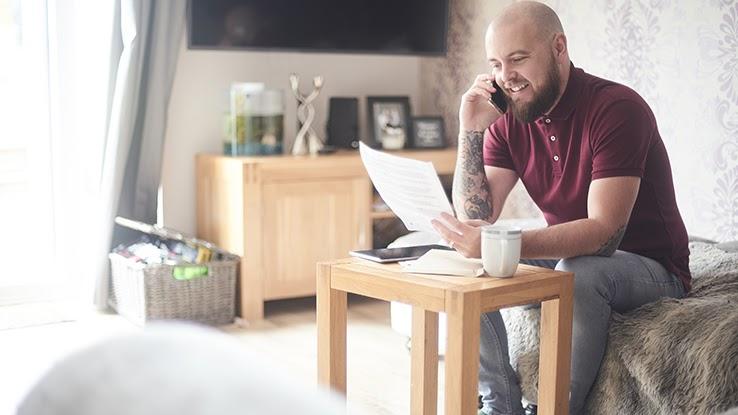
What Are the Pros and Cons of Cash-Out Refinancing?
If you own your home, it’s likely your biggest asset. And there’s an effective way to use this to your advantage if you need some extra money to pay off debts, make renovations or support other investments: getting a cash-out refinance loan.
Refinancing often results in more favorable loan terms, and with this option, you’ll also have immediate access to the money you need. But there are also some potential disadvantages to consider before you head to the bank. To help you determine if a cash-out refinance is the best option for you, it’s essential to learn the pros and cons of cash-out refinancing. You’ll also want to understand how the loan works before deciding whether this popular lending choice can help you achieve your financial goals.
What Is Cash-Out Refinancing?

In real estate, a refinance is a popular type of home loan in which the buyer obtains a new loan for more favorable terms while paying off the existing loan in the process. Typically, people refinance to obtain lower interest rates and lower monthly mortgage payments. You can also change the length, or term, of your loan with this process or remove a borrower who’s on your existing mortgage and won’t appear on the refinance mortgage.
With a cash-out refinance, you take on a higher loan amount in order to take cash out — you’re essentially replacing your existing loan with a new one in order to receive money on the difference between the loan amounts. Your home is used as collateral to back the loan, and you can typically borrow up to 125% of the value of your residence. Your new mortgage becomes a higher amount than your existing mortgage, and you get paid the difference between the two loans in cash. That’s because part of the refinance goes towards paying off the existing mortgage — you won’t have two mortgages out on the same property at one time.
A cash-out refinance is different from other refinancing options for a number of reasons. One of the most popular refinance options is a home equity line of credit (HELOC). With a HELOC, you keep your current loan, but you also receive cash for the equity of your home. In other words, you keep your current loan and then also add a second loan for the cash you need, borrowing against the equity in your home. You will have two liens against your property, as a HELOC is “considered a second mortgage.”
Unlike a HELOC, a cash-out refinance is an entirely new loan. You have new loan terms and a new amount that’s higher than your first loan’s amount. The cost of this will vary depending on your own financial situation; closing costs, payments and loan terms will be different for everyone.
The Cash-Out Refinancing Process, Explained

To decide if a cash-out refinance loan is right for you, it helps to go over the ins and outs of the process. Let’s start at the beginning when you first purchase your home. Imagine that you buy a home for $400,000 and put $100,000 down, so your original mortgage loan is for $300,000. A decade later, say you now owe $200,000 on your mortgage. That means you could have $200,000 in equity built up if market conditions remain the same, or you may have more equity if your local housing market has boomed. For the purposes of this example, imagine that your home is still worth $400,000.
At this time, you need a larger sum of money for something — maybe you want to consolidate debts, purchase a second home or make some major improvements to your current residence. You decide to pursue a cash-out refinance to obtain that lump sum, and your lender offers you a cash-out loan for 75% of the value of your home. In this example, that figure would equal $300,000 based on the $400,000 market value of your home.
In this scenario, you’d need to use $200,000 of the $300,000 to pay off the principal you have left on your original mortgage (remember you got your original mortgage for $300,000 and paid it down by $100,000). That would leave you with a remaining $100,000 to take out in cash. Keep in mind that you don’t always need to take out a new loan for the full amount you’re approved for. If you don’t want to take on that much additional debt, you could get a smaller amount in cash instead, but you’d still need at least $200,000 to cover the remainder of your original mortgage.
What Are the Cons of a Cash-Out Refinance?

One of the cons of a cash-out refinance is that getting a new loan essentially starts your need to pay interest all the way back at the beginning again. If you’ve been paying interest for 10 years on your original mortgage and then obtain cash-out refinancing, you’re setting yourself up from that point on for another brand new set (and potentially 30 more years) of interest payments.
Another downside is that you’ll need to pay closing costs that might range from 2% to 5% of your mortgage. Be sure that the money you’re receiving is worth the extra costs. You’ll also be required to pay private mortgage insurance, also known as PMI, if you’re borrowing over 80% of the value of your home.
What Are the Benefits of a Cash-Out Refinance?

There are several benefits to a cash-out refinance. To start, your new interest rate may be lower than the rate on your first mortgage loan. This can save you money each month on your mortgage payment and over the lifetime of the loan. If you’re using the money to pay off debt, this could also help lower your debt-to-income ratio, reducing the amount of debt you have while also raising your credit score.
If you use the cash to make home improvements, the value of your home could increase. Your home could sell for a higher price later on if you want to refinance again in a few years. If you’re using the home as collateral for purchasing another property or making an investment, the extra cash can help boost your net worth. The additional property you buy could bring in passive rental income that you can use to pay off both of your mortgages faster.





